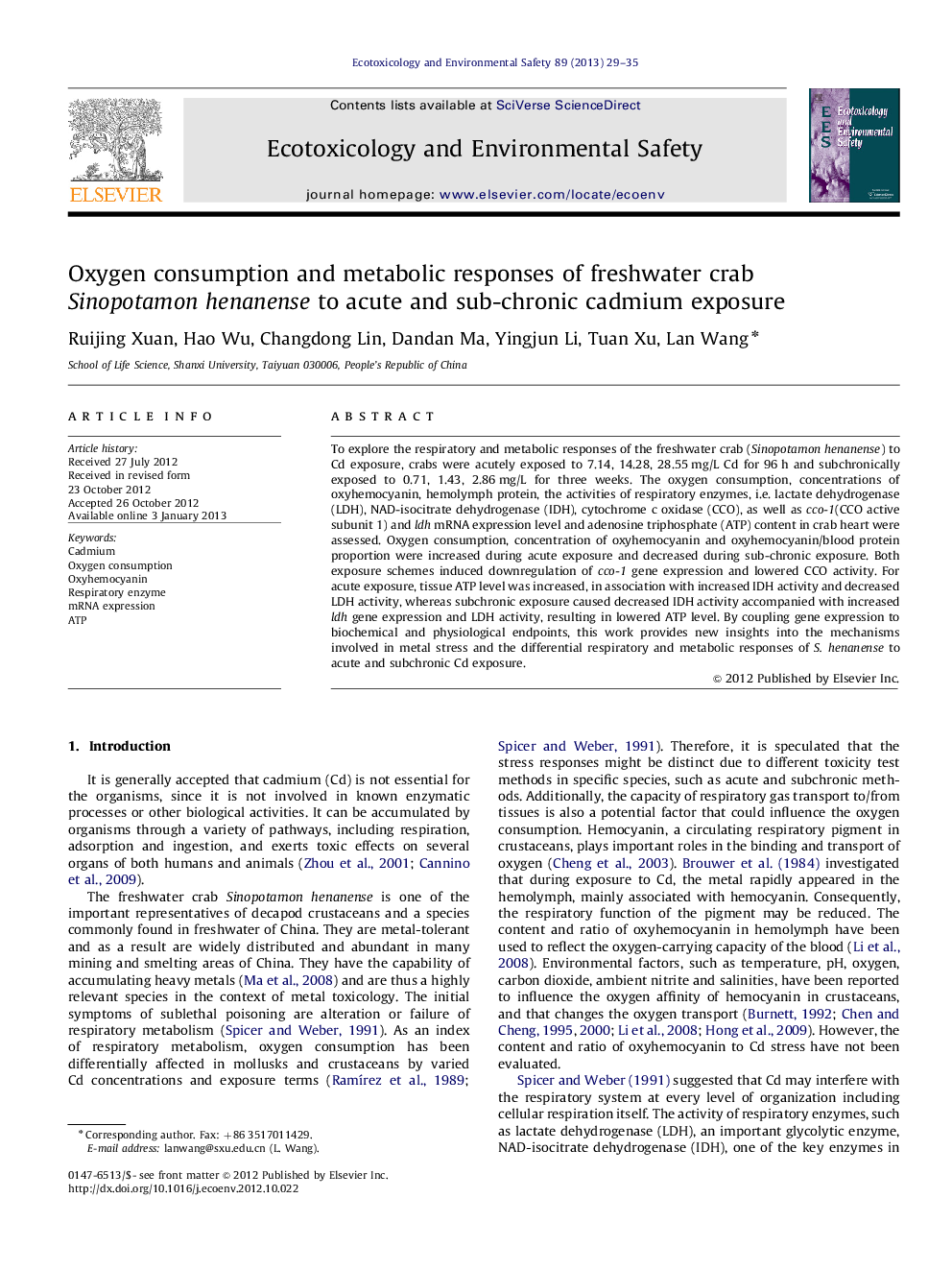| Article ID | Journal | Published Year | Pages | File Type |
|---|---|---|---|---|
| 4420580 | Ecotoxicology and Environmental Safety | 2013 | 7 Pages |
To explore the respiratory and metabolic responses of the freshwater crab (Sinopotamon henanense) to Cd exposure, crabs were acutely exposed to 7.14, 14.28, 28.55 mg/L Cd for 96 h and subchronically exposed to 0.71, 1.43, 2.86 mg/L for three weeks. The oxygen consumption, concentrations of oxyhemocyanin, hemolymph protein, the activities of respiratory enzymes, i.e. lactate dehydrogenase (LDH), NAD-isocitrate dehydrogenase (IDH), cytochrome c oxidase (CCO), as well as cco-1(CCO active subunit 1) and ldh mRNA expression level and adenosine triphosphate (ATP) content in crab heart were assessed. Oxygen consumption, concentration of oxyhemocyanin and oxyhemocyanin/blood protein proportion were increased during acute exposure and decreased during sub-chronic exposure. Both exposure schemes induced downregulation of cco-1 gene expression and lowered CCO activity. For acute exposure, tissue ATP level was increased, in association with increased IDH activity and decreased LDH activity, whereas subchronic exposure caused decreased IDH activity accompanied with increased ldh gene expression and LDH activity, resulting in lowered ATP level. By coupling gene expression to biochemical and physiological endpoints, this work provides new insights into the mechanisms involved in metal stress and the differential respiratory and metabolic responses of S. henanense to acute and subchronic Cd exposure.
► Oxygen consumption and metabolic responses of crab to Cd exposures were examined. ► Acute exposure increased oxygen consumption and enhanced aerobic respiration. ► Subchronic exposure decreased oxygen consumption and suppressed the metabolic rate. ► Both schemes impaired mitochondrial function at gene expression and protein levels.
